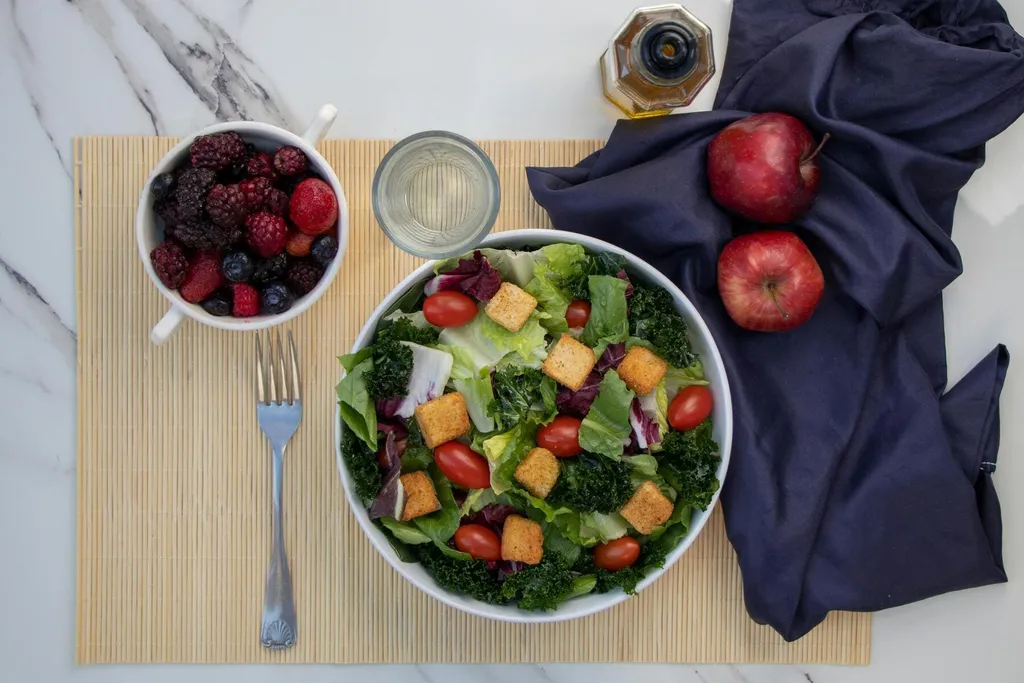From Fasting to Feasting: What to Eat During and After Intermittent Fasting

Julia Hochmann is a dedicated champion of women's health and wellness. As Fasty’s biggest supporter,...

With Fastic, millions of people have achieved their desired weight, overcome disease and regained their quality of life.
Intermittent fasting offers multiple benefits, such as promoting metabolism, encouraging weight loss, supporting cellular repair, and more. However, fasting alone won’t suffice. A healthy balanced diet is a paramount component to achieving an effective fasting experience. But what exactly are you allowed to eat and drink during the eating window?
Here, we will explore the best options in foods and beverages for a well-balanced and successful fast.
Survival Switch On: What Happens Inside the Body When Fasting?
Ceasing the main source of energy a human body needs interferes with numerous fundamental physiological mechanisms. When we stop eating the body must shift its energy source from nutrients found in regular foods to stored energy within itself.
Initially, the body breaks down stored glycogen for fuel. Once it depletes it, the body enters a state of ketosis and burns fat for energy. During this state, metabolism slows down to conserve the energy available. Insulin levels drop encouraging the breakdown of fat, while growth hormone levels rise, helping in the preservation of muscle mass. Moreover, autophagy, the cellular self-cleaning process, boosts, promoting cell repair and renewal. To summarize, the body flips the survival switch on to optimize all the resources it has available.
Best Time to Eat During Intermittent Fasting
The best time to eat during a fast will depend on each person’s eating habits, health goals, and intermittent fasting plan. While some people prefer to have their only meal of the day during the early afternoon, others will opt for a late evening meal. Ultimately, it depends on the intermittent fasting regimen you follow (TRE, alternate day fasting, 5:2, etc.)
Harvard Health advises limiting the hours of the day you eat between 7 AM to 3 PM or 10 AM to 6 PM. Additionally, the Center for Human Nutrition at UCLA recommends syncing your eating schedule to your body’s natural circadian rhythm, where you eat between 7 AM to 7 PM. Eating late at night has detrimental effects, including but not limited to increased risk of weight gain and diabetes.
Adjusting your meal times to specific hours of the day will allow the body to use its nutrient intake efficiently. The Fastic app creates a fasting schedule for you. When you take the Fastic quiz you’ll get your ideal fasting regimen, tailored specifically for you.
Best Foods to Eat During Intermediate Fasting
When doing alternate-day fasting (ADF) or the 5:2 diet, our bodies require the necessary nutrients to sustain healthy energy levels. Unlike time-restricted eating (TRE) where food intake is not relevant, ADF and the 5:2 diet demand a food intake of 0-500 kcal or 500-1000 kcal, respectively. But, what can you eat during intermittent fasting without compromising your efforts?
You must maximize and choose wisely what you want your body to utilize as an energy source. Fortunately, there are a variety of excellent options to choose from:
Water-rich fruits like watermelon, cantaloupe, and strawberries.
Vegetables high in essential vitamins and minerals, including cucumber, celery, and spinach.
Legumes with high protein and fiber content, such as chickpeas, lentils, and black beans.
Whole grains rich in complex carbohydrates like oats, quinoa, and brown rice.
Nuts and seeds are rich in healthy fats and proteins, which promote sustained energy release. Omega-3 fatty acids found in nuts and seeds provide a slow-burning energy source for the body. Implementing them in your everyday diet will provide the energy necessary to finish the day strong.
When fasting the last thing you want to think about is food prep, much less think about what ingredients are allowed and which are not. The Fastic app offers a wide variety of meal recipes that adapt to your fasting regimen, saving you the hassle of figuring out what you can and cannot eat. It conveniently counts calories for you, and rations your daily calorie intake for every meal. In addition, it tells you a recipe’s caloric content, cooking time, and ingredient swap options. To top it off, it even describes how each meal positively impacts your body.

How Much to Eat During Intermittent Fasting?
The amount of calories you can eat during intermittent fasting will depend on multiple factors like age, gender, health background, physical activity level, and weight. If your main focus is to lose weight, it is recommended you consult with a healthcare professional for an appropriate approach according to your medical background.
What Drinks Don’t Break a Fast?
Three main drinks won’t break a fast: water, herbal tea, and black coffee. Thanks to their zero-calorie or low-calorie properties, drinks like lemon water won't break a fast. Whatever it is you decide to drink, always have hydration as your main objective. Staying hydrated is crucial for the body’s correct functioning. An added perk of water is that it regulates hunger cues, making fasting periods manageable.
How to Manage Hunger During Fasting Hours?
Another tactic that can help with managing your hunger is chewing gum. Gum won’t break a fast as long as it is sugar-free. Chewing gum tricks the stomach into thinking you are full. Other non-ingesting methods to cope with hunger include meditation, reading, and exercising.
What to Eat After Fasting?
You’ve achieved your goal, congrats! Now it's time to return to a regular eating schedule. For your stomach’s sake, you must gradually reintroduce meals. However, avoid going back to your regular diet, and opt for healthier options and portions.
So, what can you eat after breaking a fast? Aim for whole, unprocessed, and nutrient-dense foods. Maintain a balanced macronutrient diet by incorporating foods rich in high-quality proteins, complex carbohydrates, and plant-based sources of fats into your improved diet.
Put these options at the top of your grocery list:
Nutrient-dense foods with essential vitamins and minerals: Replenish energy.
Protein-rich foods: Assist in muscle repair, recovery, and immune health.
Complex carbohydrates: Offer a sustained energy release to replenish glycogen stores.
Healthy fats: Encourage hormone production and promote cellular function.
Fiber-rich foods: Aid digestion and promote gut health.
Breaking the Fast: How to Transition from Intermittent Fasting to Eating?
Make Your Efforts Last: How to Maintain Your Fasting Results
You’ve achieved your goal, but it doesn’t mean you can fall back into your eating habits. Your body has had a taste of the good life and it wants more of it. Returning to your usual diet will revert your body to where it started.
Change your eating habits for the better by adopting a balanced and varied diet. Add regular physical activity to your routine and incorporate a 30-minute workout into your day. Manage your hunger cues better, don’t fall for them. Small lifestyle changes offer significant improvements. Once you combine your healthier body with an upgraded diet you’ll help maintain its newfound version.
A Nutrient-rich Diet: The Key to Effective Fasting
Optimize your fasting journey with the right nutrition. Take advantage of available tools to ease your fasting experience and maximize its benefits. Embrace a nutrient-rich diet and constantly hydrate for a successful experience during and after fasting. Download the Fastic app to tackle your fasting journey. With the correct meal schedule and nutrient-rich meals, you’ll reach your health goals and maintain them long-term.
Disclaimer: It is advised to speak with a health professional before beginning intermittent fasting or a diet program. There may be side effects for people with certain medical conditions.
With Fastic, millions of people have achieved their desired weight, overcome disease and regained their quality of life.
Take the Quiz